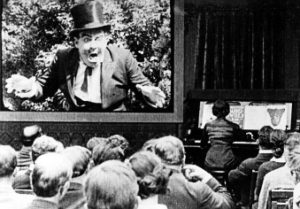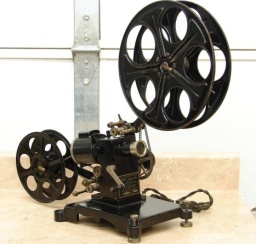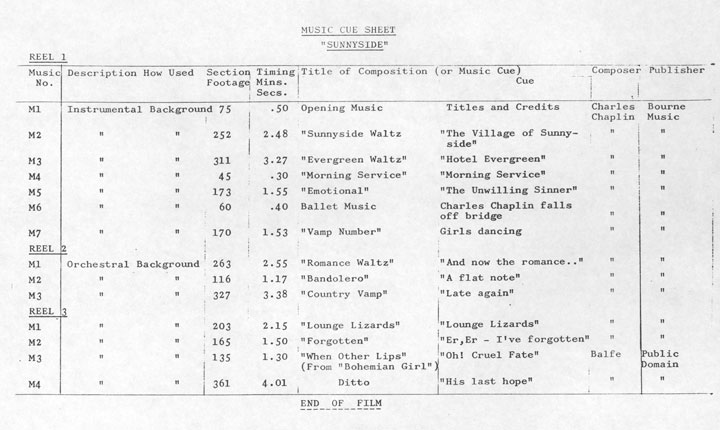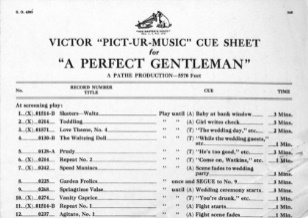- The original function of music in silent film was to drown out the noise of the projector as well as talkative audiences.

http://deireland.com/tag/film/

- Music for silent films was usually played live in the cinema, but the musical contact varied from country to country and culture to culture.
- In early periods of silent film, continuous musical accompaniment was not the normal practice; it was often intermittent and sometimes non-existent.
- Initially silent film accompanists were left to their own devices and often just improvised to what they saw on screen, therefore the quality of music accompaniment varied widely.
- Popular music of the day also featured in silent film accompaniment, so it is not surprising that popular music and songs often crossed over into film accompaniment.
- Musical ‘encyclopaedias’ started appearing containing vast inventories of music, largely classics of the nineteenth-century western European, supplemented by some original compositions for inspiration.
- As films developed and the genre moved into theatres and bigger spaces, audiences came to expect continuous musical accompaniment when watching films. From here onwards, music became a much more integral part of the film experience and has remained that way.
- The US film industry began to standardize musical accompaniment around between 1908 and 1912.
- The single most important device in the standardization of film music was the cue sheet, a list of musical selections that fitted to an individual film.

http://chaplin.bfi.org.uk/resources/bfi/filmog/film_large.php?fid=59459&enlargement=sunnyside.jpg

- The more sophisticated queue sheets contained actual excerpts of music timed to fit each scene and cued to screen action to keep the accompanist on track.
- As early as 1909, Edison Studios circulated cue sheets for their films.
Text adapted from MUSIC IN SILENT FILM. Read the full article:
http://www.filmreference.com/encyclopedia/Independent-Film-Road-Movies/Music-MUSIC-IN-SILENT-FILM.html#ixzz4Hlw43EJs